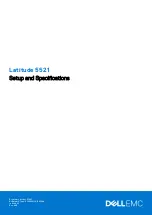
29
ABB i-bus
®
KNX
Project design and programming
With these communication objects, lightscenes can be stored individually
e.g. with a push button or another operating device.
Fig. 13: Communication objects “Store Lightscene x/y”
No.
Function
Object name
Data type
Flags
92
Store Scene
Lightscene 1/2
1 bit (EIS 1)
DPT 1.006
C, W
93
Store Scene
Lightscene 3/4
1 bit (EIS 1)
DPT 1.006
C, W
94
Store Scene
Lightscene 5/6
1 bit (EIS 1)
DPT 1.006
C, W
95
Store Scene
Lightscene 7/8
1 bit (EIS 1)
DPT 1.006
C, W
96
Store Scene
Lightscene 9/10
1 bit (EIS 1)
DPT 1.006
C, W
97
Store Scene
Lightscene 11/12
1 bit (EIS 1)
DPT 1.006
C, W
98
Store Scene
Lightscene 13/14
1 bit (EIS 1)
DPT 1.006
C, W
99
Store Scene
Lightscene 15/16
1 bit (EIS 1)
DPT 1.006
C, W
Lightscene X/Y Store Scene [EIS 1; 1-bit switching]:
The scenes are stored via this object.
On receipt of a telegram, the current brightness values of all the channels which are assig-
ned to the scene are stored. The next time the scene is recalled, all the channels which are
assigned to the scene are set to these stored brightness values. The communication objects
are only visible if the scenes have been activated in the
Scenes
parameter window and the
parameter option “Permit storing of lightscenes” has been set to “yes”.
Telegram value
“0”: Store scene X
“1”: Store scene Y
Table 7: Communication objects “Store Lightscene x/y”
















































